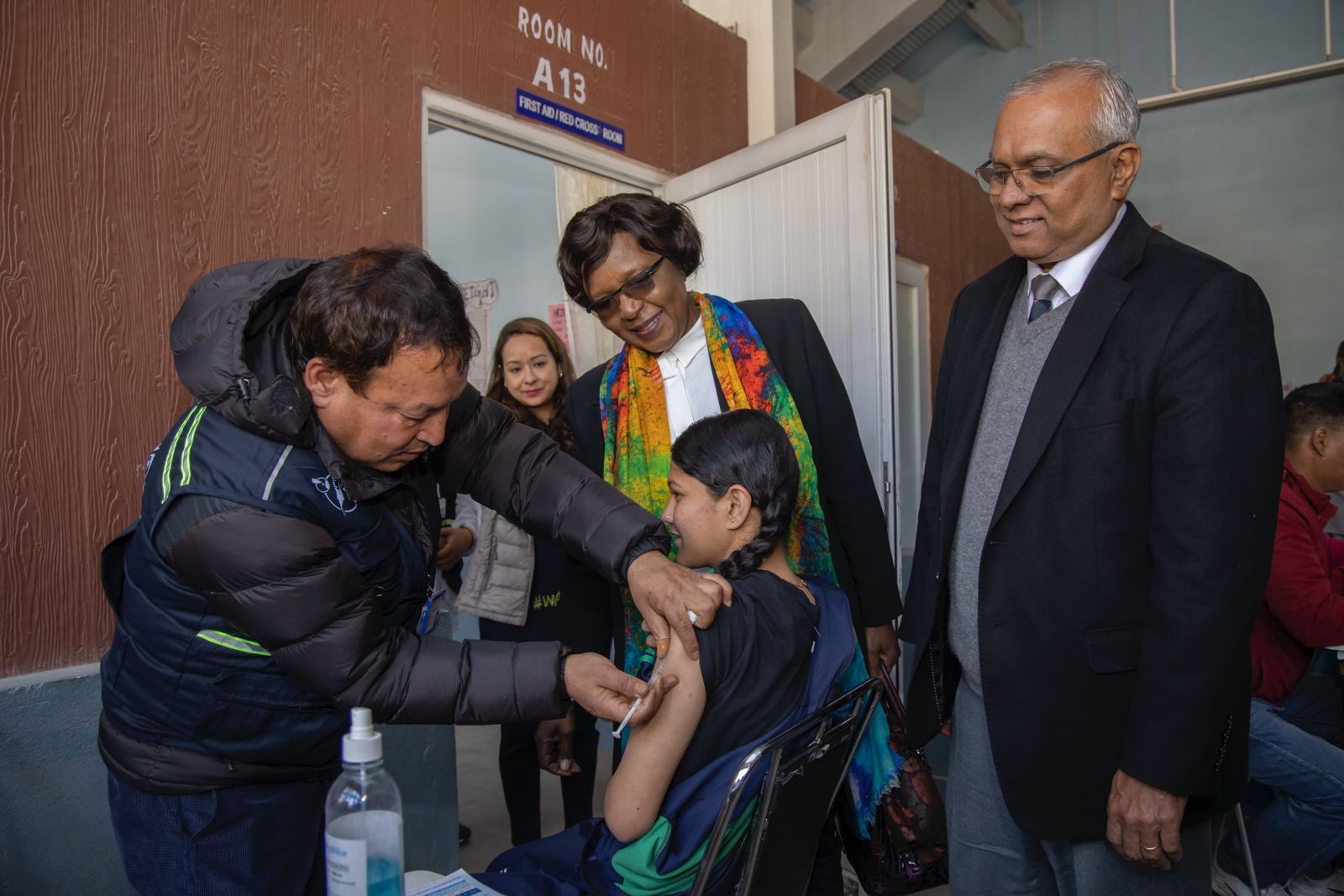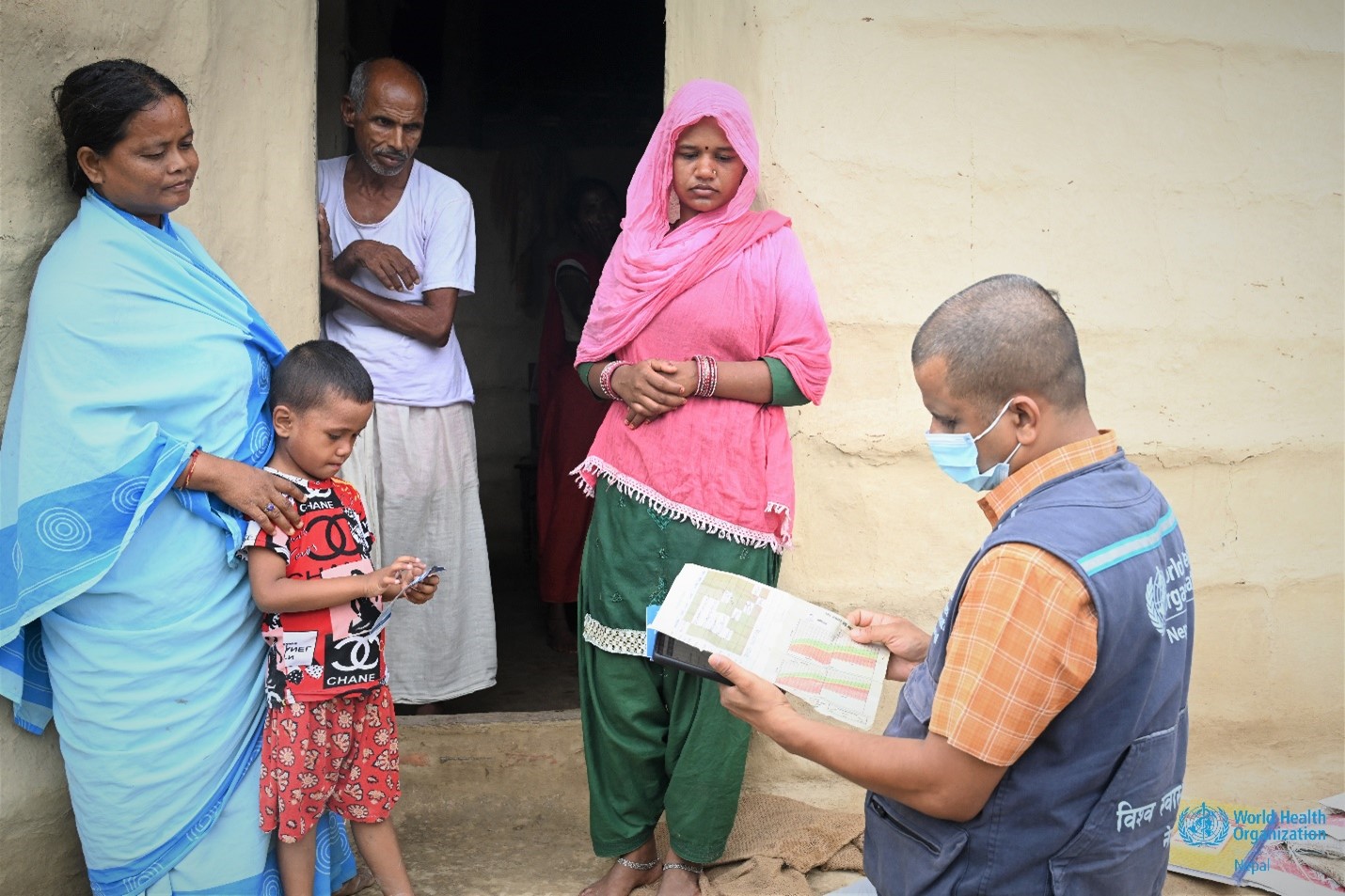On 18 August 2025, the World Health Organization’s South-East Asia Regional Office announced that Nepal had officially eliminated rubella — a major milestone in the country’s public health journey. This achievement marks the culmination of over two decades of sustained effort by the Government of Nepal, supported by WHO and partners, and sets the stage for the next ambitious target: eliminating measles by 2026.
“Nepal’s elimination of rubella shows what is possible when a nation keeps children’s health at the center of its agenda,” said Dr Rajesh Sambhajirao Pandav, WHO Representative to Nepal. “By eliminating rubella, Nepal has protected generations of children from a preventable disease and set an inspiring example for others to follow.”
/countries/nepal/dsc_5744.jpg?sfvrsn=3f3d0536_4)
A joyful mother with her child after the child received the measles-rubella vaccine in Bagmati Province, Nepal. Photo credit: WHO Nepal/S.G.Amatya
“The elimination of rubella in Nepal stands as a testament to what can be achieved when we unite with purpose and commitment,” said Dr Tanka Barakoti, Director General of Department of Health Services. “It reflects the strength of our National Immunization Program and the life-saving impact of vaccines. I extend my heartfelt gratitude to our health workers, volunteers, community members, and leaders for their tireless efforts, and to WHO, Gavi, and all partners for their unwavering support in this journey.”
WHO’s verification process for rubella elimination* is based on five lines of evidence: epidemiological trends, surveillance quality, population immunity, laboratory capacity, and program sustainability. Nepal met all these criteria, thanks to strong national leadership and WHO’s technical and operational guidance.
At the heart of this success lies Nepal’s robust disease surveillance system. Laboratory-based rubella surveillance began in 2004 with WHO’s support, followed by integrated measles-rubella case-based surveillance in 2007. Today, the system spans over 1,000 reporting sites across 682 municipalities, covering more than 90% of local governments. Surveillance for congenital rubella syndrome (CRS) was also strengthened through 15 sentinel sites across all seven provinces, supported by WHO’s Immunization Preventable Diseases (IPD) programme and its network of Surveillance and Immunization Medical Officers (SIMOs).
WHO has continuously trained surveillance staff to ensure timely detection, investigation, and reporting of vaccine-preventable diseases. These efforts have helped Nepal consistently exceed global surveillance benchmarks. In 2024, the non-measles, non-rubella (NMNR) rate reached 8.02 per 100,000 population, rising to 10.89 in 2025—Nepal’s highest performance to date.

WHO Representative to Nepal (right) and UNICEF Representative to Nepal conducting a monitoring visit to observe a healthcare worker administering a measles-rubella vaccine to a child after the launch of the vaccine campaign in Bagmati Province, Nepal. Photo credit: WHO Nepal/B.Rai
Alongside surveillance, immunization coverage has been a cornerstone of Nepal’s rubella elimination strategy. In 2012, the National Immunization Program (NIP) introduced the rubella-containing vaccine (RCV) through a nationwide campaign targeting children aged nine months to 15 years. A second dose was added to the routine schedule in 2016. Between 2012 and 2024, Nepal conducted four national campaigns, maintaining high coverage despite significant challenges such as the 2015 and 2023 earthquakes and the COVID-19 pandemic.
In 2023, an outbreak response immunization (ORI) campaign in ten measles-affected districts reached over 1.8 million children, achieving 108% administrative coverage. This was followed by a nationwide measles-rubella campaign in early 2024, vaccinating over six million children with 112% coverage. These efforts, combined with strengthened routine immunization, led to record-high coverage rates: 97% for the first MR dose and 93% for the second, according to WHO and UNICEF estimates.

A WHO Surveillance Medical Officer visits a household in Gaushala municipality of Mahottari district, Madhesh Province, Nepal, to verify the immunization status of children in 2023. Photo credit: WHO Nepal
“This success reflects years of sustained surveillance, strong program governance, and the unwavering dedication of our health workers and communities,” said Dr Bibek Lal, Director of Family Welfare Division. “We also recognize Gavi, UNICEF, and WHO, whose more than two decades of technical and operational partnership have been pivotal in building and sustaining our immunization achievements. As we now turn our focus to measles elimination, sustaining the hard-won gains of rubella elimination remains our greatest challenge — one that we will meet through continued vigilance, collaboration, and system resilience.”
Laboratory capacity has also been critical. The first measles-rubella lab was established at the National Public Health Laboratory (NPHL) in 2004. Since then, two subnational labs have been added in Dharan and Dhangadi. WHO has supported these labs with diagnostic kits, equipment, and advanced training. In early 2025, NPHL introduced molecular genotyping for measles and rubella, enhancing case confirmation and virus tracking. Nepal also became the first country in the region to implement a new WHO-endorsed testing algorithm, improving case classification and setting a regional benchmark.
“Eliminating rubella was not achieved overnight. It took decades of dedicated surveillance, vaccination campaigns and responsive systems,” said Dr Balwinder Singh Chawla, Team Lead of WHO-IPD Nepal. “WHO is proud to have walked alongside Nepal on this journey, but the real credit goes to the government, health workers, and communities whose commitment made this milestone possible.”
Strong governance and coordination have underpinned Nepal’s progress. The National Immunization Act (2016) provided a legal framework for vaccine access, while immunization committees were set up at all administrative levels. WHO has supported the Family Welfare Division in convening regular meetings of the National Immunization Advisory Committee and the National Verification Committee for Measles and Rubella Elimination, which provide technical guidance and monitor progress.

A young student is vaccinated against measles-rubella at one of the session sites in Bardibas Municipality of Mahottari district, Madhesh Province, Nepal, in 2023. Photo credit: WHO Nepal
“The Full Immunization Declaration Initiative in Nepal has strengthened the delivery and access to complete doses of all vaccines among the target population, supported by regular community engagement and mobilization,” said Dr Abhiyan Gautam, Chief of Child Health and Immunization Services Section at FWD. “The continued hard work of health workers, the immunization and surveillance network has led to increased vaccination coverage and sensitivity of surveillance, enabling Nepal to eliminate rubella ahead of the regional target.”
Nepal’s success is not just a national triumph—it’s a testament to long-standing collaboration with WHO and a model for the region. As the country turns its focus to measles elimination, the momentum generated through rubella elimination offers both hope and inspiration for continued progress in safeguarding child health.
*Definition of Rubella Elimination: “The absence of endemic rubella transmission in a defined geographical area (e.g. region or country) for ≥12 months and the absence of CRS cases associated with endemic transmission in the presence of a well-performing surveillance system.”
